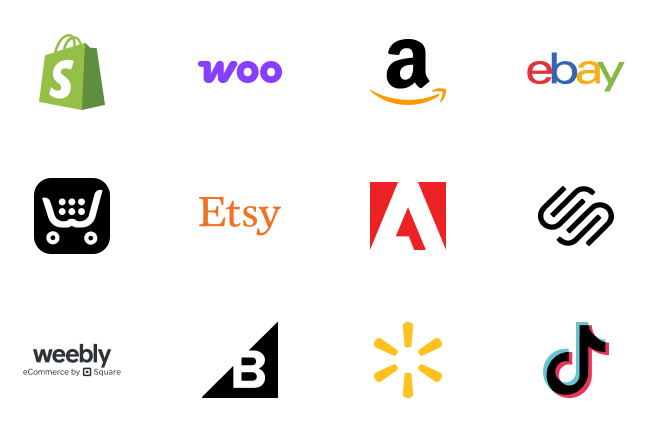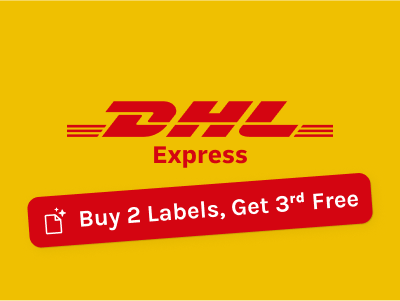When you ship via sea freight, your goods are loaded into a shipping container at a nearby seaport.
LCL – or Less Than Container Load – is a shipping method used when your freight shipment isn’t large enough to fill a 20 or 40-foot shipping container. This makes LCL a cost-effective alternative to FCL or full container load shipping.
LCL allows small businesses to save money on freight shipping. Rather than paying for a whole shipping container, you can purchase a share of the volume. Prices are prorated by volume so it's easy to pay only for the space you need. In certain cases, though, you'll save money by using FCL shipping. We’ll discuss how to choose from FCL vs. LCL in the following blog.
Easyship can help you connect with affordable sea freight and fulfillment providers. Our global fulfillment network allows you to grow lean, access discounted shipping rates, and centralize all your fulfillment needs into our single unified dashboard.
Here’s a guide to LCL shipments.
Who Ships LCL?
With LCL, you only pay for the space you need in a shipping container.
LCL a great option if you don’t have enough cargo to fill a whole shipping container. For example, if you’re shipping a small number of goods, or your products that don’t take up much space. LCL is sometimes called a groupage shipment because your cargo is grouped in with other cargo in the container.
Once your shipments reach a certain volume, you may be better off using FCL shipping or full container load. FCL shipping is charged at a flat rate, unlike LCL, meaning there comes a point where you’ll save with a flat rate.
LCL is helpful for first-time importers and small businesses just getting into global eCommerce.
The Cost of LCL
LCL shipments are priced based on the amount of space used in cubic meters (cbm). Though cargo weight is a secondary factor, it usually doesn’t add to your price because cargo ships are massive.
The minimum space you can reserve for LCL is 1 cubic meter – or 100cm x 100cm x 100cm. Prices are prorated, meaning they increase as you increase your cargo volume. These price increases aren’t linear, however. Rates can increase sharply at certain cargo thresholds. For small volumes of cargo, however, you can often double your LCL shipment volume from the minimum (1 cubic meter) before seeing any real difference in price.
Say you’re shipping a box of hoodies with a cubic volume of 10cm x 10cm x 10cm. You’re paying for 10x the volume you need because you have to pay the minimum. However, increasing your cargo volume from, say, 5 cubic meters to 8 cubic meters could be quite a jump in price.
It’s best to check the rates per cubic meter from your freight company. Find the price at your average estimated shipment volume, and calculate if the price of LCL is justified.
When to Ship FCL
Paying for an entire shipping container can be cost-effective if you need a lot of space. As a rule of thumb, you’ll want to consider FCL shipping as your shipment nears 10 cubic meters in volume.
Below the 10 cbm threshold, you’ll likely get a better price on using the incremental pricing of LCL. Calculate your total cost of shipping to find the point where your volumes are better charged at the flat rate price of FCL.
The Pros and Cons of LCL
The core benefit of LCL shipping is a pay-per-usage rate on sea freight. Here are a handful of other benefits of LCL shipments, plus a few drawbacks:
Pros of LCL
- Reduce shipping costs: LCL lets you ship goods at basically any volume for a prorated price. This means you can right-size your shipping costs to your budget.
- Save on inventory costs: Sending more shipments means spending less on inventory storage in warehouses.
- Avoid high air freight prices: Sea freight is cheaper than air freight because it’s slower. However, if you can wait for your shipment, you can save a lot on shipping costs.
- Find space during peak times: During holidays and periods of disruption, you’re more likely to find cargo space with LCL shippers than with FCL or air freight.
Cons of LCL
- Longer delivery lead times: LCL shipments must be loaded and unloaded from containers at both the sending and receiving ports. This can add days to your delivery times.
- Higher rates per cubic meter: LCL shipments are prorated based on the cubic meters used, but these rates can exceed the price of FCL shipments.
- Shared cargo, shared problems: If another cargo in your FCL shipment is delayed at customs, your shipment may be delayed as well.
- Great chance of damage: LCL shipments are handled more, increasing the chances of damage in transit.
- Added costs of transport: LCL shipments are loaded in with other cargo, meaning they require the use of a Container Freight Station (CFS). This process, also known as container stuffing, must be paid for at both the sending and receiving ports. You also need to pay for trucking cargo from your sending warehouse to the port, and vice versa in the receiving country. These costs should be accounted for before paying for LCL freight.
How to Ship LCL
Considering LCL shipping? Here are a few things to know before you contact your freight supplier.
- Know the shipping terms: Start by getting a rate quote from the freight supplier based on your estimated average volume.
- Calculate your total cost of shipping: Review the LCL rates and compare to FCL to make sure you’re shipping cost-effectively. Also account for the added costs of FCL, including the cost of trucking goods from your warehouse to port, loading them into the container, then having them unloaded at the receiving port and trucked to the next warehouse.
- Prepare for customs: Your LCL shipment will need to clear customs in the destination country. Be sure to include all necessary customs paperwork, including a commercial invoice and a packing list. If you’re importing to the US, you’ll need to set up a Customs Bond, or an insurance policy in case your shipping company doesn’t pay on your behalf.
- Coordinate with your warehouse: Your warehousing partner will help you store and fulfill your orders after receiving the cargo. Easyship can connect you to reliable third-party logistics partners around the globe to ensure your international fulfillment is fast and affordable.
LCL: The Cheapest Freight Option, Sometimes
LCL is a sea freight shipping method that is often cost-effective for smaller international importers. This is because FCL pricing is calculated based on cubic meters (cbm) used in the shipping container, with minimum usage of 1 cbm. Merchants importing larger volumes may be able to save money on shipping by using FCL or using a full shipping container instead.
Whichever method of freight you choose, Easyship is here to help you save on warehousing and logistics. We’re happy to connect you to our trusted warehousing and fulfillment partners around the world, all you have to do is get in touch.
Ready to start saving up to 89% on shipping? Create an Easyship account today. It’s free to sign up!
LCL FAQ
What is the full form of FCL?
FCL stands for a full container load. It's the full form of LCL, a sea freight shipping method that lets you pay a prorated amount for space in a shipping container. By contrast, FCL is a shipping method in which you pay for the use of the full shipping container.
Why is LCL more expensive than FCL?
LCL can be both more and less expensive than FCL. It all depends on how much space you need in the shipping container. The price of LCL shipments is prorated based on the volume you need and includes a mandatory minimum allotment of 1 cubic meter in most cases. These price increases aren't linear, though, so at a certain threshold, you may be paying more per cubic meter with FCL than on just buying a whole container space with FCL.
How do I track my LCL shipment?
Your freight provider should provide you with tracking information for your shipment. Follow the link provided to the website to track your order.















































.svg)
.svg)






.avif)
.avif)

.avif)
.avif)


.avif)


.avif)










.avif)
.avif)



.avif)
.avif)


.avif)
.avif)


.avif)



.webp)







.svg)





.webp)